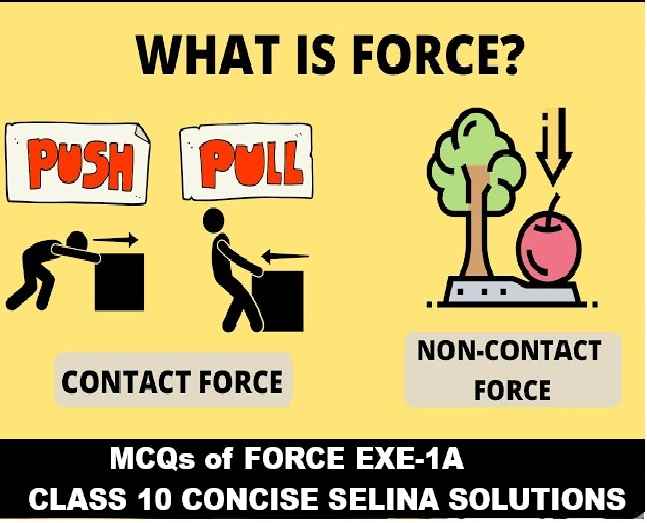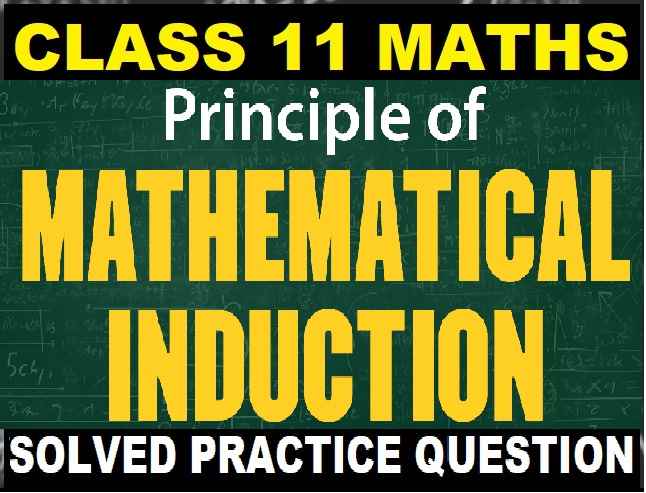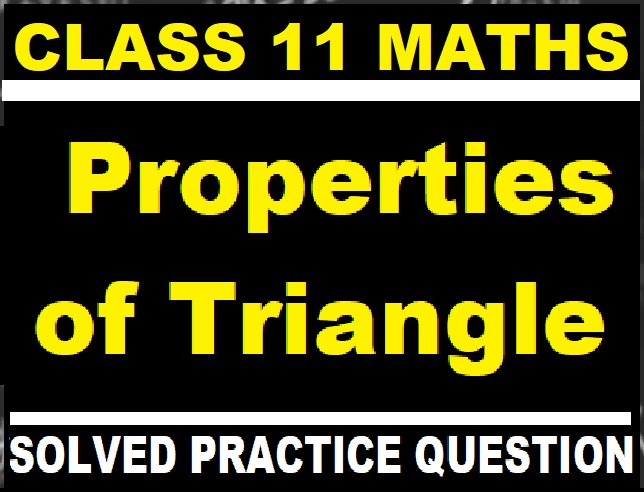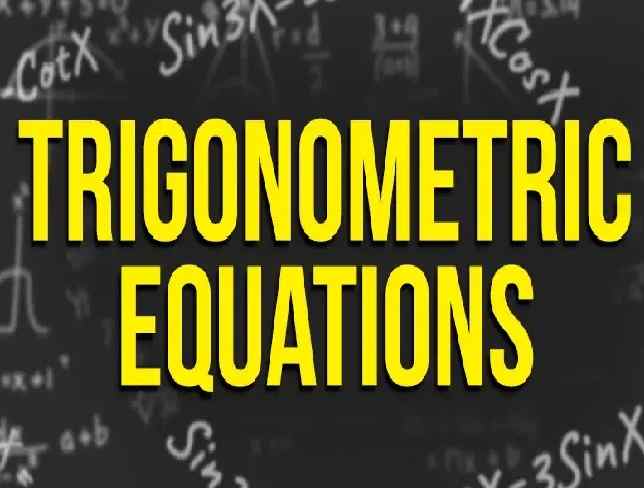Force Exe-1A MCQs Concise Class 10 ICSE Selina Solutions. Answer of Multiple choice Questions of Class 10 Physics of latest publications. Visit official website CISCE for detail information about ICSE Board Class-10.

Force Exe-1A MCQs Concise Class 10 ICSE Selina Solutions
| Board | ICSE |
| Publications | Selina Publication |
| Subject | Physics |
| Class | 10th |
| Chapter-1 | Force |
| Book Name | Concise |
| Topics | Solution of EXE-1A MCQs |
| Academic Session | 2025-2026 |
Force Exe-1A MCQs
Concise Class 10 ICSE Selina Solutions
Que-1: The correct expression for force is
1.F=ma(mass m is constant)
2.F=mv
3.F=mv
4.F=mp
Ans. F=ma(mass m is constant).
Hint: According to newton’s second law of motion that F⃗=ma⃗ , or net force is equal to product of mass and acceleration where m is constant
Que-2: motion of a stationary rigid body in a straight path when a force is applied in the direction of force is.
1.rotational motion
2.linear motion
3.angular motion
4.zigzag motion
Ans. linear motion
Hint: motion of an object in a straight line in the direction of the force. is called Linear motion.
Que-3: The motion of a door when a force is applied on its handle is:
1.rotational motion
2.linear motion
3.angular motion
4.zig-zag motion
Ans. rotational motion
Hint: the pivoted object point and the force is applied the object at the suitable point, it rotates the object about the axis passing through the fixed point. This is called the turning effect of force. and the rotational motion.
Que-4: The moment of a force about a given axis depends on:
1.only on the magnitude of force
2.only on the perpendicular distance of force from the axis
3.neither the force nor the perpendicular distance of force from the axis
4. both, the force and its perpendicular distance from the axis.
Ans. both, the force and its perpendicular distance from the axis.
Hint: this is defined as the torque when moment of force about an axis is calculated by producing the magnitude of the force by the distance of perpendicular from the axis line of action of the force.
Que-5: For producing the maximum turning effect on a body by a given force, the perpendicular distance of the line of force from the axis of rotation should be
1.minimum
2.it does not matter
3.maximum
4.zero
Ans. the force and the torque produces about an axis not depend only on the magnitude of the force but also on the perpendicular distance from the axis of rotation to the line of action of the force.
Que-6: 10^7 dyne cm is equal to …………… Nm.
1.1
2.10
3.100
4.1000
Ans. 1
10^7= dyne cm = 1 Nm
Que-7: The moment of force for anticlockwise moment is taken as …………… and for clockwise moment is taken as ……………
1.positive, negative
2.negative, positive
3.positive, positive
4.negative, negative
Ans. positive, negative
Hint: the force momentum for anticlockwise moment taken positive and for clockwise moment is taken as negative.
Que-8: The direction of rotation of a pivoted body can be changed by changing
1.the direction of force
2.the point of application of force
3.both the direction of force and the point of application of force
4.the magnitude of force
Ans. both the direction of force and the point of application of force
Hint: the pivoted body direction is depends the direction of the applied force and the point at which the force is applied relative to the pivot point. changing the factor which is both these factor can either the direction of rotation of the body.
Que-9: A couple is formed when …………… are not acting along the same line
1.two unequal and parallel forces
2.two equal and parallel forces
3.two equal and opposite parallel forces
4.two unequal and opposite parallel forces
Ans. two equal and opposite parallel forces
Hint: there are two equally parallel opposite each other forces, not acting along the same line from a couple.
Que-10: As per the principle of moments in equilibrium
1. Sum of anticlockwise moments is greater than sum of clockwise 2.moments
3.Sum of anticlockwise moments is equal to sum of clockwise moments
4.Sum of anticlockwise moments is less than sum of clockwise moments
none of the above
Ans. Sum of anticlockwise moments is equal to sum of clockwise moments. According to the principle of moments in equilibrium : sum of anticlockwise moments = sum of clockwise moments.
Que-11: A body is acted upon by two unequal forces in opposite directions, but not in the same line. The effect is that
1.the body will only have rotational motion
2.the body will only have translational motion
3.the body will have neither rotational motion nor translational motion
4.the body will have rotational as well as translational motion.
Ans. the body will have rotational as well as translational motion
Hint: where body acted by unequally , then the effect is that the body will be oppositely direction create but not in same line because the effect is that the body having rotational moment as well as translational motion.
Que-12: Out of the following which one is an example of dynamic equilibrium?
1.Moon revolving around the earth
2. A pebble fixed at the end of a string whirling in a circular path
3. An moving at a constant height
4.A beam balance balanced in a horizontal position.
Ans. 1,2and 3
the dynamic equilibrium because the balance may remain still, it’s a static equilibrium where opposing forces.
— End of Force Exe-1A MCQs Concise Class 10 ICSE Selina Solutions. :–
Return to :– Concise Selina ICSE Physics Class-10
Thanks
Please Share with Your Friends


